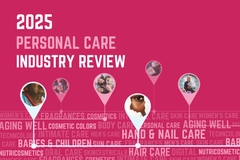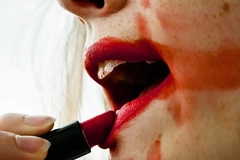Revolution Beauty profits drop but company keeps positive outlook
Revolution Beauty reports a loss in its sales with a 20% slump in revenue following a plan to re-invigorate its product portfolio after a turbulent few years.
Revenue fell to £72.4 million (US$91.6 million) compared to £90.4 million (US$114.53 million) the year prior, and a 48% decline in profit in its first-half earnings in the first six months ending August 31.
The beauty company reported pre-tax losses of £10.9 million (US$13.8 million) for its half-year, against profits of £400,000 (US$506,758) a year earlier.
However, Revolution Beauty says it saw progress from its revamp plan announced earlier this year. The turnaround plan worked to reduce its number of products, focus on higher-performing solutions and sell through slow-moving stock at discounted rates.
Revolution Beauty attributes the dip to this shift in gears. It says the loss was driven by the planned simplification of the product portfolio, discontinuation of unproductive SKUs and stock clearance activity.
“Our performance in the first half reflects the steps we have taken to position the Group for long-term, profitable growth,” says CEO Lauren Brindley.
“Since launching our new strategy in February, we have substantially cut a long tail of unproductive SKUs, improved our operational delivery and made good progress with our cost savings programs. Consequently, we now have a core portfolio that is growing globally with a significantly improved underlying gross margin,” she says.
Marketing costs rose 2% to “underpin the future growth of core products.” Revolution Beauty sells makeup, skin care, hair care and body care and is known for its “dupes” of more expensive products.
Financial results
The multi-channel mass beauty innovator predicts a return to growth in the fourth quarter and that the cost-saving distribution and administrative costs programs are working. It previously had seven brands; it now has just three.
Gross profit fell to £23.2 million (US$29.4 million) from £44.7 million (US$56.6 million) as gross margin dipped to 32% from 49.4%.
On the other hand, the underlying adjusted EBITDA rose to £3.9 million (US$4.9 million) from £3.3 million (US$4.2 million). Distribution costs were cut by a third and administrative expenses decreased 30% year on year.
Sales of its “core” ranges rose 6% in the first half and growth of these products reached 16% in the second quarter.
Revolution Beauty plans to include new and expanded retailer relationships, a better pipeline of makeup innovation, the launch of a skin care range and the global expansion of its budget brand, Relove.
“As these initiatives start to take effect, we expect a return to growth in Q4 and anticipate that this will accelerate through FY26. With good momentum in the underlying business, I remain confident in the Reigniting the Revolution strategy and our ability to become a top-five mass beauty brand,” says Brindley.
The company reiterated that its sales are set to fall slower in the second half of the fiscal year, with a return to growth in the final three months.
Past and future plans
In retail expansion, the cosmetics company previously signed a relationship agreement with German beauty retail giant DM to launch 850 stores in January. It also expanded into 250 new Boots stores in the UK in October, which it says is “already generating positive momentum.”
The launch of Revolution Beauty on Amazon US was reported to be “performing well in early months of trading.”
In recent years, the company has faced significant challenges, including a dispute with its former leadership amid a battle with its shareholder Boohoo. These issues culminated in an investigation and the suspension of its shares from the London Stock Exchange.
At the beginning of this year, Revolution Beauty reported a return to profit in its full-year results. It reported a 2% year-over-year increase in sales to £191.3 million (US$242.1 million), with “strong” performance in the Rest of World markets supporting its growth despite difficulties in the US and e-commerce sectors.













